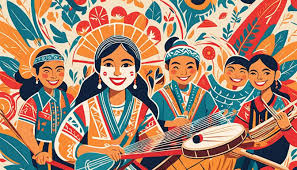The heartbeat of the Philippines Nightlife (필리핀 밤문화) is music. It flows through every street corner, bar, and beachside stage, uniting people in rhythm and emotion. Whether it’s a soulful acoustic singer in Cebu, a jazz quartet in Manila, or a reggae band in Boracay, the Philippines has built a global reputation for its musical talent and vibrant live performance scene.
1) A nation born to sing
Music is at the core of Filipino identity. From karaoke gatherings at home to professional performances on international stages, Filipinos express emotion through song. This deep cultural connection gives the country’s nightlife its distinct character—music is never background noise; it’s the soul of the experience.
Visitors often say that no night out in the Philippines feels complete without live music, and they’re right. It’s not just entertainment—it’s a shared language.
2) Manila: The capital of sound
Manila’s nightlife thrives on its diversity of genres and venues.
- 12 Monkeys Music Hall & Pub in Ortigas hosts local rock, soul, and pop acts, blending food, drinks, and culture.
- Strumm’s Makati remains one of the city’s legendary live music venues, with rotating bands performing Filipino classics and international hits.
- Saguijo Café + Bar in Makati serves as a cultural hub for independent artists and alternative music fans.
The live music culture in Manila is evolving, with collaborations between DJs and instrumentalists redefining what nightlife performances can be.
3) Cebu: Island melodies and creative freedom
Cebu’s musical heritage is strong, producing many of the country’s top singers and bands.
Venues such as Handuraw Pizza and The Outpost have long supported the local indie scene, while hotels and beachfront lounges provide spaces for acoustic and jazz performers.
What makes Cebu special is its grassroots energy—many artists start performing here before gaining national fame. Every night feels like a discovery.
4) Boracay and Siargao: Music by the sea
On the islands, music takes on a more organic form.
In Boracay, bars like Epic and Paraw host live DJs, percussionists, and acoustic artists blending global beats with island rhythms.
In Siargao, beachfront bars such as Bravo and Harana Surf Resort nurture a creative, bohemian vibe—where jam sessions often form spontaneously and audiences become part of the show.
This is the purest expression of the Philippines Nightlife (필리핀 밤문화): free, unfiltered, and full of soul.
5) Davao and the southern sound
Down south, Davao City offers a different rhythm—calmer but equally rich in artistry.
Venues like Huckleberry Southern Kitchen & Bar and The Grid feature jazz, blues, and acoustic acts that complement the city’s more laid-back pace.
Music here feels intentional, connecting deeply with the audience through storytelling and craftsmanship.
6) The rise of performance diversity
Beyond traditional live bands, performance nightlife in the Philippines now includes spoken word poetry, drag shows, and cultural showcases.
- Today x Future and Nectar Nightclub in Manila have become landmarks for inclusive and creative performances.
- Regional cultural centers host traditional music nights, introducing younger audiences to instruments like the kulintang and bandurria.
This variety keeps the Philippines Nightlife (필리핀 밤문화) dynamic and inclusive, celebrating both heritage and innovation.
7) The people behind the music
What truly defines the scene are the performers themselves—talented, humble, and passionate. They play not for fame but for connection. Audiences sing along, request songs, and even join in. The barrier between artist and listener disappears, creating an atmosphere of shared joy that few countries can replicate.
Final Thought
The live music culture of the Philippines is a reflection of its people—expressive, generous, and full of heart. Every night echoes with melody, turning ordinary moments into memories. The Philippines Nightlife (필리핀 밤문화) isn’t just about where you go—it’s about what you feel when the first chord strikes and the whole crowd sings together.


